
Maat The Ancient Egyptian Goddess of Truth, Justice and Morality
Maat, also known as Ma’at or Mayet, was a female goddess in the ancient Egyptian religion who represented truth, justice, balance and morality. The daughter of the Egyptian sun deity Ra and wife of the moon god Thoth, she served a kind of spirit of justice to the Egyptians. She decided whether a person would successfully reach the afterlife, by weighing their soul against her feather of truth, and was the personification of the cosmic order and a representation of the stability of the universe. The earliest writings where she is mentioned date back to the Old Kingdom of Egypt more than 2,300 years ago.
The Egyptian culture was centered on order, everything had its due place in the world. This included religion, society and seasonal changes. The goddesses Ma’at came to represent the concept of balance and order because many Egyptians needed to explain the world around them. She was the one that kept the stars in motion, the seasons changing and the maintaining of the order of Heaven and Earth. The opposing force of this was known in ancient terms as “isfet” or chaos. Ancient Egyptians considered the desert beyond the Nile River to be chaotic; whereas, the area close to the Nile was considered orderly. Together, these two forces brought balance to the world in which they lived and was an important part of everyday Egyptian life
Ma’at is usually depicted in the form of a woman seated or standing with outstretched wings attached to both her arms. In other instances she is seen holding a scepter in one hand and an ankh (the symbol of life) in the other. Her statue was a stone platform depicting a stable foundation on which order was built. A common symbol associated with her is an ostrich feather, which she is almost always shown as wearing in her hair. Often, the Feather of Ma’at was a distinctive feature of her headdress. Less frequently images of the goddess showed her without a head, instead replaced by the feather. In other images the feather alone conveyed her presence. This feather has come to symbolize her being, as well as the representation of balance and order, it became a hieroglyph for “truth.”
Ma’at was associated with the law in ancient Egypt. From the 5th dynasty (c. 2510-2370 BC) onwards, the Vizier responsible for justice was called the Priest of Maat and in later periods judges wore images of her. The ‘Spirit of Maat’ was embodied by the chief judge in charge of the Egyptian law courts. He had a dual role, serving as both a priest and working directly in the law courts and justice system. The “Priest of Ma’at” began court hearings whilst wearing the feather of Ma’at and all other court officials wore small golden images of the goddess as a sign of their judicial authority, also as a symbol that their judgement would be balanced and fair. Priests drew the Feather of Ma’at on their tongues with green dye, so that the words they spoke were truth. The priest would rule on the earthly punishment according to the nature of the law that had been broken. Punishments included imposing fines, corporal punishment and in extreme cases capital punishment. It was considered a crime against Ma’at if a person engaged in jealousy, dishonesty, gluttony, laziness, injustice, and ungratefulness. The guilty Egyptian was deemed to have violated the Spirit of Ma’at and would face a further judgment in the Underworld during the ceremony of justification in the Hall of the Two Truths. The ‘Spirit of Ma’at’ detailed in the wisdom literature contained practical guidance with examples and some rules applied in previous law cases. These kinds of instructional texts have been described as “Ma’at Literature”.
The Book of the Dead is a collection of funerary texts and spells from ancient Egypt designed to assist a person’s journey through the underworld, into the afterlife. Without these spells, it was believed a person could not proceed. In the book is a spell called the “Forty-Two Declarations of Purity” or the “Negative Confessions”. This spell is comprised of confessions the tomb owner believed he committed throughout his life. It was believed that any crimes committed against Ma’at should be written down as they could easily be forgiven. In the Hall of Ma’at is where the judgement of the dead was performed in which Ma’at played an important role. The ceremony, called the “Judgment of Osiris,” was named after Osiris, the god of the dead. When the dead were judged, it was the feather of Ma’at that their hearts were weighed against. If a balanced scale was struck, the deceased was deemed worthy to meet Osiris in Paradise. The weightlessness of their hearts indicated that their souls were not burdened with sin and evil. If the heart of the deceased was found to be heavier than the feather of Ma’at, it would be devoured by Ammit, the soul-eating monster depicted with the head of a crocodile, the forequarters of a lion and the hindquarters of a hippopotamus. Other gods in the judgement hall who were part of the tribunal overseeing the weighing of the heart were also pictured holding a feather but the scales always represented Ma ́at.
Ancient Egyptians worshipped many gods, one was certainly Ma’at, although Egyptian archaeologists now believe she was perhaps more of a concept or an ideal. It’s reasonable to assume her principles aided the people of Egypt in being better individuals and that she could be compared to the conscience of a person. There was a small temple dedicated to Ma’at by Hatshepsut, the fifth pharaoh of the Eighteenth dynasty of Egypt, Egypt’s first female pharaoh, at the Karnak temple complex in Luxor Egypt. Largely in ruins, it still preserves inscriptions of some of the viziers of Ramesses III and XI. A previous Ma’at temple existed in this area, indicated by reliefs and stelae belonging to the reign of Amenhotep III. The temple is inside the Precinct of Montu, the smallest of three enclosures at Ipet-Isut.
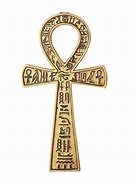
Ma’at
Ma’at (pronounced may-et) is the ancient Egyptian goddess of truth, justice, harmony, and balance (a concept known as ma’at in Egyptian) who first appears during the period known as the Old Kingdom (c. 2613 – 2181 BCE) but no doubt existed in some form earlier. She is depicted in anthropomorphic form as a winged woman, often in profile with an ostrich feather on her head, or simply as a white ostrich feather. The feather of Ma’at was an integral part of the Weighing of the Heart of the Soul ceremony in the afterlife where the heart of the soul of the dead person was weighed in the scales of justice against the feather. Historian Margaret Bunson writes:
She maintained a vital role in the mortuary rituals of Egypt where she weighed the hearts of the deceased. This mortuary role evolved over the decades into the principle of ma’at, the desired right attitude, which remained the ethical and moral foundation of the Egyptian people. (152)
NAME & SIGNIFICANCE
Ma’at is said to have been born of the sun god Ra (Atum) at the beginning of creation through the power of Heka, who was magic personified. Her name means “that which is straight” implying order, justice, and harmony. She is thought to have been present from the beginning of time when, from the primordial waters of Nun, the ben-ben (first mound of dry land) rose with Atum (or Ra, the sun god) standing upon it in the presence of the invisible Heka. In the moment that Ra spoke the world into creation, Ma’at was born. Her spirit of harmony and balance infused the creation and caused the world to operate rationally according to purpose. The principle of ma’at was the operational function of life and that of heka (magic) the power source which allowed for it. It is for this reason that she is considered more of a concept than a goddess with a specific personality and story like Isis or Hathor. Ma’at’s spirit is the spirit of all creation, and if one is in tune with that spirit, one will live well and have good reason to hope for eternal peace in the afterlife; if one refused to live in accordance with the principles of Ma’at, then one suffered the consequences which one would have brought upon one’s self. Margaret Bunson comments on this, writing:
Ma’at was the model for human behavior, in conformity with the will of the gods, the universal order evident in the heavens, cosmic balance upon the earth, the mirror of celestial beauty. Awareness of the cosmic order was evident early in Egypt; priest-astronomers charted the heavens and noted that the earth responded to the orbits of the stars and planets. The priests taught that mankind was commanded to reflect divine harmony by assuming a spirit of quietude, reasonable behavior, cooperation, and a recognition of the eternal qualities of existence, as demonstrated by the earth and the sky. All Egyptians anticipated becoming part of the cosmos when they died, thus the responsibility for acting in accordance with its laws was reasonable. Strict adherence to ma’at allowed the Egyptians to feel secure with the world and with the divine plan for all creation. (152)
Her importance is signified by one of the means by which the Egyptians wrote her name. Although she was often identified by the feather symbol, she was also designated by a plinth. The plinth was commonly seen below the thrones of deities but not used to relay their personal names. The fact that Ma’at was signified by a plinth suggests, according to Egyptologist Geraldine Pinch, that Ma’at was considered the foundation upon which Egyptian society was built (160). Her significance is also demonstrated in iconography showing her constantly at the side of Ra in his heavenly barge sailing with him across the sky during the day and helping him defend the boat against the serpent Apophis by night.
The ancient Egyptians also invoked her name in stories of a long-lost past on earth when all things were beautiful and there was no injustice. Such stories usually have to do with the time of Osiris and Isis and their just and benevolent rule of the earth before Osiris was murdered by Set. In some cases, though, it is Ma’at who rules the earth alone as Pinch notes:
Egyptian myths of a golden age included a period when Ma’at was ruler of earth. She was sometimes said to have withdrawn to the heavens because she was grieved by the wicked behavior of humanity. Ma’at could still be thought of as living with an individual like his or her good angel and accompanying that person into the afterlife. Eventually “joining Ma’at” became a euphemism for dying. (160)
It is in her mortuary role that Ma’at is best known to most people in the modern day. One of the most iconic images of ancient Egypt is the ceremony known as The Weighing of the Heart of the Soul in which Ma’at and her white feather of truth were most important.
MA’AT’S WHITE FEATHER OF TRUTH
The Egyptians believed strongly that every individual was responsible for his or her own life and that life should be lived with other people and the earth in mind. In the same way that the gods cared for humanity, so should humans care for each other and the earth which they had been provided with. This philosophy is evident in every aspect of Egyptian culture from the way they constructed their cities to the balance and symmetry of their temples and monuments. If one lived harmoniously in the will of the gods, then one was living in harmony with the concept of ma’at and the goddess who embodied that concept. One was free to live however one wanted, of course, and completely ignore the principle of ma’at, but eventually one would face the trial which awaited everyone: judgment in the Hall of Truth (also known as The Hall of Two Truths) in the afterlife. Wilkinson comments on this:
Her role was multifaceted but embraced two major aspects. On the one hand, Ma’at represesnted the universal order or balance – including concepts such as truth and right – which was established at the time of creation. This aspect is the basis of her relationship with Ra – for she is the order imposed upon the cosmos created by the solar demiurge and as such is the guiding principle who accompanied the sun god at all times…As a natural corollary of her identity with right balance and harmony Ma’at also actively represented the concept of judgement. In the Pyramid Texts the goddess appears in this role in dual form as ‘the two Ma’ats’ judging the deceased king’s right to the thrones of Geb [the rule of the earth] and in the later funerary literature it is in the Hall of the Two Truths (the dual form of Ma’at) that the judgment of the deceased occurs. The gods themselves, acting as the judges of the divine tribunal, are called ‘the council of Ma’at.’ (150)
To the Egyptians, the soul consisted of nine separate parts: the Khat was the physical body; the Ka one’s double-form; the Ba a human-headed bird aspect which could speed between earth and the heavens; Shuyet was the shadow self; Akh the immortal, transformed self; Sahu and Sechem aspects of the Akh; Ab was the heart, the source of good and evil; Ren was one’s secret name. All nine of these aspects were part of one’s earthly existence. When one died, the Akh (with the Sahu and Sechem) appeared before the god Osiris in the Hall of Truth and in the presence of the Forty-Two Judges to have one’s heart (Ab) weighed in the balance on a golden scale against Ma’at’s white feather of truth.
One would need to recite the Negative Confession (those actions one could honestly claim one had never committed in life) and then one’s heart was placed on the scale. If one’s heart was lighter than Ma’at’s feather, one waited while Osiris conferred with the Forty-Two Judges and the god of wisdom, Thoth, and, if considered worthy, was allowed to pass on through the hall and continue one’s existence in paradise; if one’s heart was heavier than the feather, it was thrown to the floor where it was devoured by the monster Ammut (the gobbler), and one then ceased to exist. No one could escape judgment, and the king of the land would have to stand before the scales of Ma’at and Osiris just as the lowest slave of field hand would also.
If one passed through judgment and avoided any of the pitfalls and traps set by demons and the forces of chaos, one arrived at The Field of Reeds, a paradise where one was greeted by those loved ones who had gone before and which was a mirror image of one’s life on earth. Margaret Bunson describes this afterlife:
Eternity itself was not some vague concept. The Egyptians, pragmatic and determined to have all things explained in concrete terms, believed that they would dwell in paradise, in areas graced by lakes and gardens. There they would eat the “cakes of Osiris” and float on the Lake of Flowers. The eternal kingdoms varied according to era and cultic belief but all were located beside flowing water and blessed with breezes, an attribute deemed necessary for comfort. The Garden of A’Aru was one such oasis of eternal bliss. Another was Ma’ati, an eternal land where the deceased buried a flame of fire and a scepter of crystal – rituals whose meanings are lost. The goddess Ma’at, the personification of cosmic order, justice, goodness, and faith, was the protector of the deceased in this enchanted realm, called Hehtt in some eras. Only the pure of heart, the uabt, could see Ma’at. (86-87)
In some images, the goddess is seen atop the scales at the moment of judgment and, in others, she is present near Osiris but she is always there even if only in the form of her feather placed on the scales. In the afterlife, she was thought to help those who had stood for her principles and lived their lives accordingly.
WORSHIP OF THE GODDESS
Although she was considered a very important deity, Ma’at had no temples and no official clergy (as was the case with Heka). She was honored by a small shrine set up in the temples of other gods. Even the one temple known to be erected in her honor by Queen Hatshepsut (1479-1458 BCE) was built within the temple precinct of the god Montu. The people venerated the goddess by living according to her principles and bringing whatever gifts they wanted to offer to her shrines in the temples of the other gods. Wilkinson writes,
Even the title ‘priest of Ma’at’ is often regarded as an honourific which may have been given to those who served as magistrates or who dispensed judicial decisions on her behalf and who apparently wore small golden images of the goddess as a sign of their judicial authority. (152)
The only “official” worship of Ma’at was when the king of Egypt made sacrifice to her upon ascending to the throne and “presented Ma’at” to the gods by offering a small image of her. In doing so, the king was asking for her help in maintaining divine balance in his rule. If the king could not achieve balance and promote harmony, then it was a clear sign that he was not fit to rule. Ma’at – and the vital concept she embodied – was crucial to the king’s success.
She was an important and all-pervasive figure in the Egyptian pantheon, even though very few stories are told of her and she had no temple or cultic following. The gods were said to live off Ma’at and, as the scholar Richard H. Wilkinson notes, most of the images of the king presenting Ma’at to the other gods at his coronation “are essentially identical to those in which the king presents food, wine, or other forms of sacrifice to the gods” (152). The gods would have, in fact, lived off Ma’at in that they were all bound by their own laws to observe harmony and balance and encourage those values in the human beings they cared for.
Temples to Ma’at were the temples of all the other gods because Ma’at was the underlying cosmic principle which made the lives of humans and gods possible. One worshiped the goddess Ma’at by living a life in accordance with the highest principles of justice, order, and harmony keeping in mind one’s neighbors and the earth one had been given to tend. Although goddesses like Hathor and Isis were more popular, and even eventually took on many of Ma’at’s attributes, she remained an important deity throughout Egypt’s history and defined the cultural values of the country for centuries.
__________________________________________
*First article*
By Bryan Hilliard
Published on Ancient Origins
References
“Ancient Egyptian Gods | Ma’at.” Ancient Egyptian Gods | Ma’at. http://www.kingtutone.com/gods/maat/
“Ma’at, Goddess of Egypt.” Egyptian Goddess Maat ***. http://www.landofpyramids.org/maat.htm
Seawright, Caroline. “Ma’at, Goddess of Truth, Balance, Order.” Ma’at, Ancient Egyptian Goddess of Truth and Order.
“Ancient Egypt: The Mythology – Feather.” Ancient Egypt: The Mythology – Feather. http://www.egyptianmyths.net/feather.htm
“Ancient Egypt: The Mythology – Ma’at.” Ancient Egypt: The Mythology – Ma’at. http://www.egyptianmyths.net/maat.htm
*Second article*
APA Style
Mark, J. J. (2016, September 15). Ma’at. Ancient History Encyclopedia. Retrieved from https://www.ancient.eu/Ma’at/
Chicago Style
Mark, Joshua J. “Ma’at.” Ancient History Encyclopedia. Last modified September 15, 2016. https://www.ancient.eu/Ma’at/.
MLA Style
Mark, Joshua J. “Ma’at.” Ancient History Encyclopedia. Ancient History Encyclopedia, 15 Sep 2016. Web. 13 Aug 2018.
License
Written by Joshua J. Mark, published on 15 September 2016 under the following license: Creative Commons: Attribution-NonCommercial-ShareAlike. This license lets others remix, tweak, and build upon this content non-commercially, as long as they credit the author and license their new creations under the identical terms.

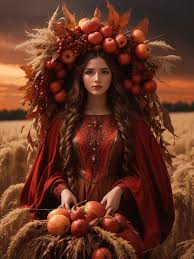
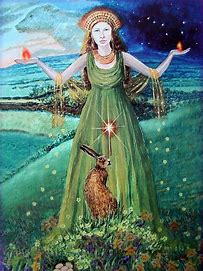
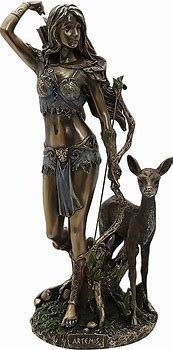
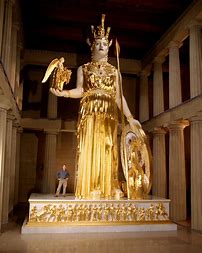

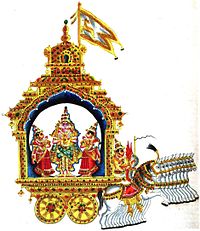
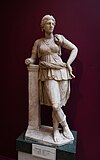
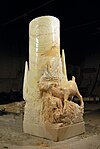
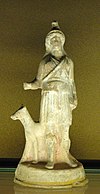







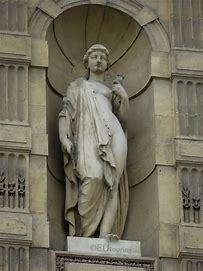
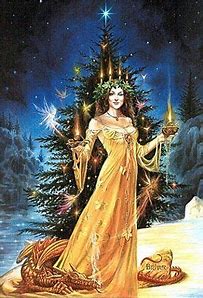


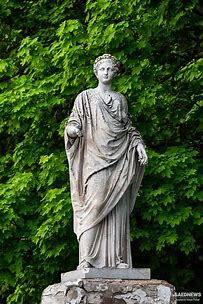
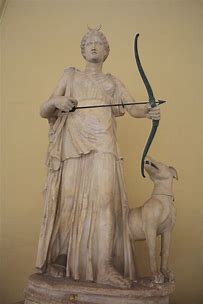

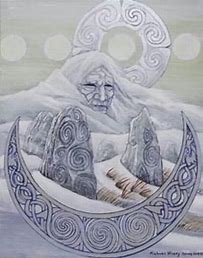


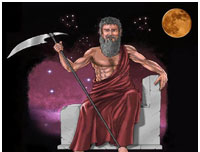

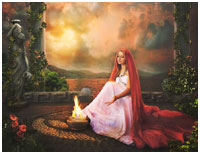






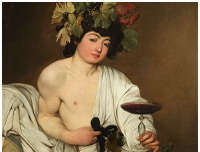
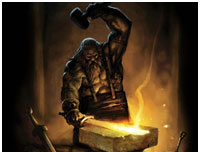

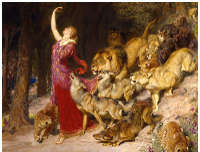
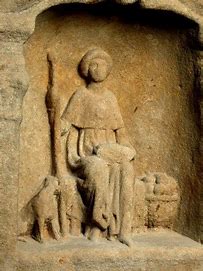
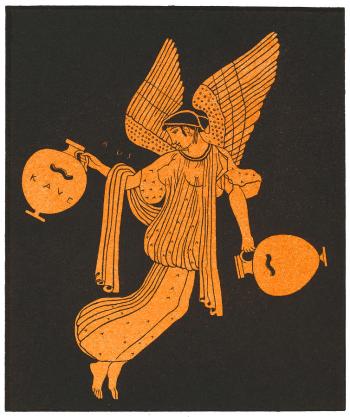
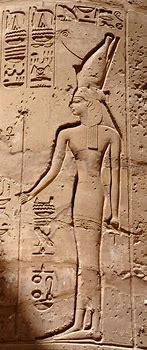
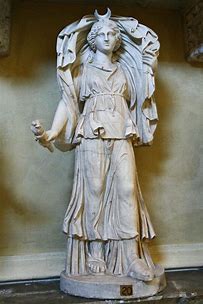
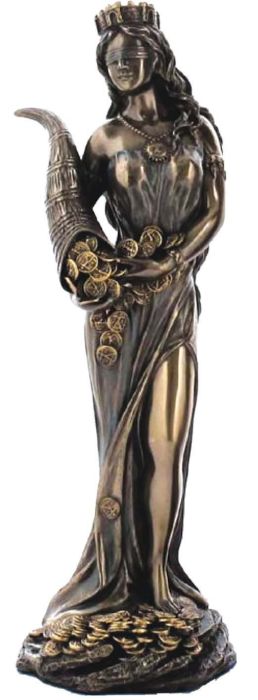
You must be logged in to post a comment.